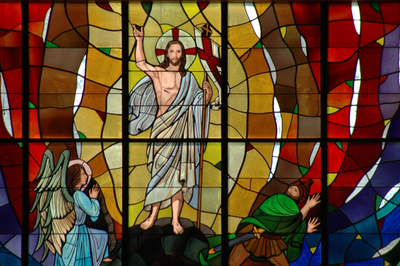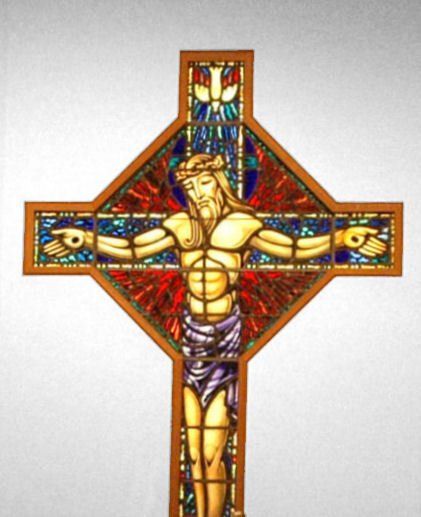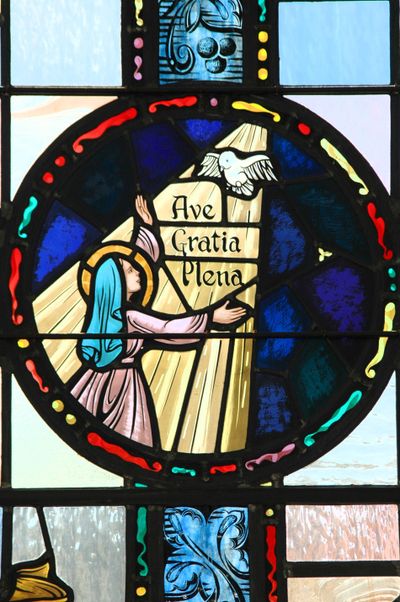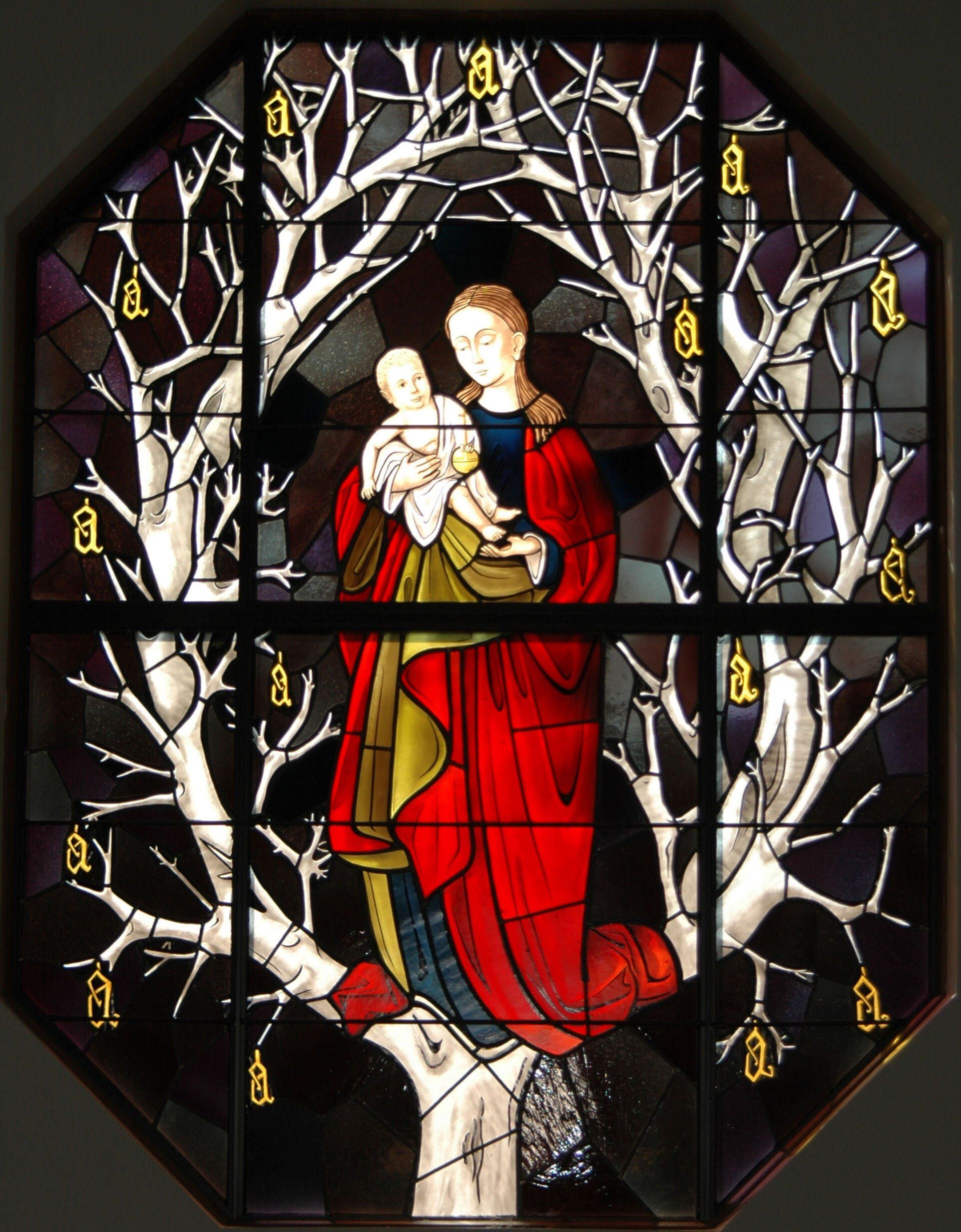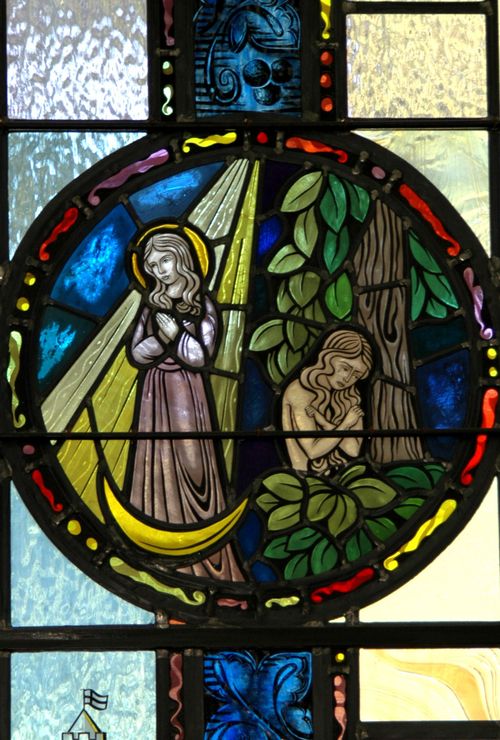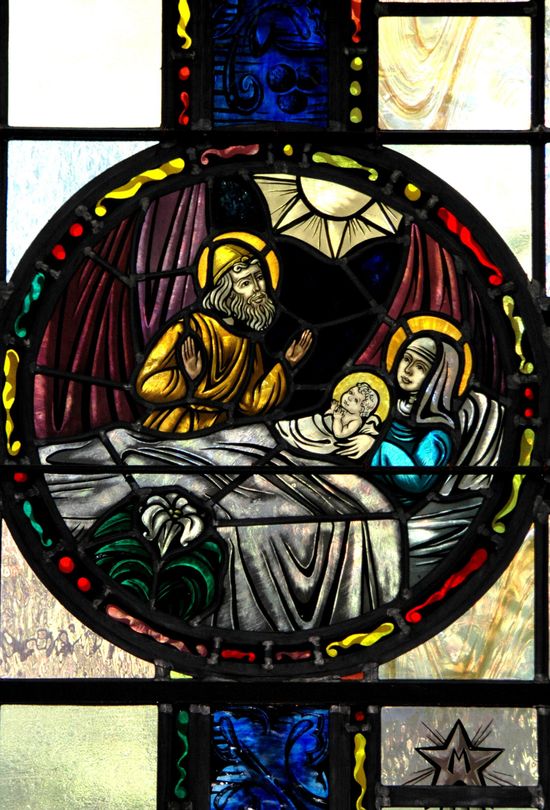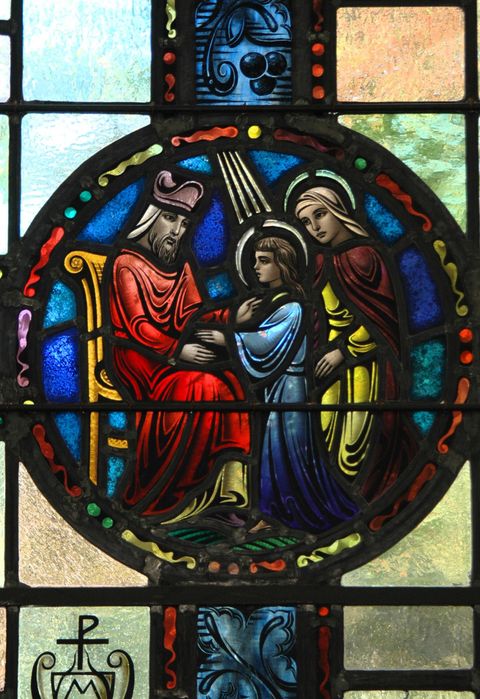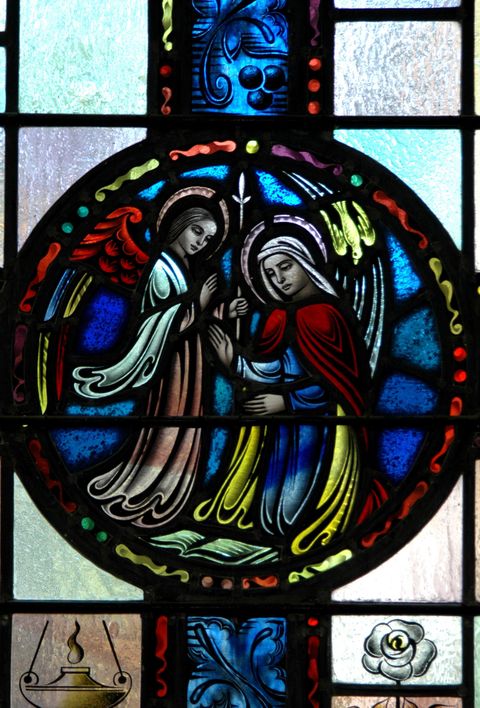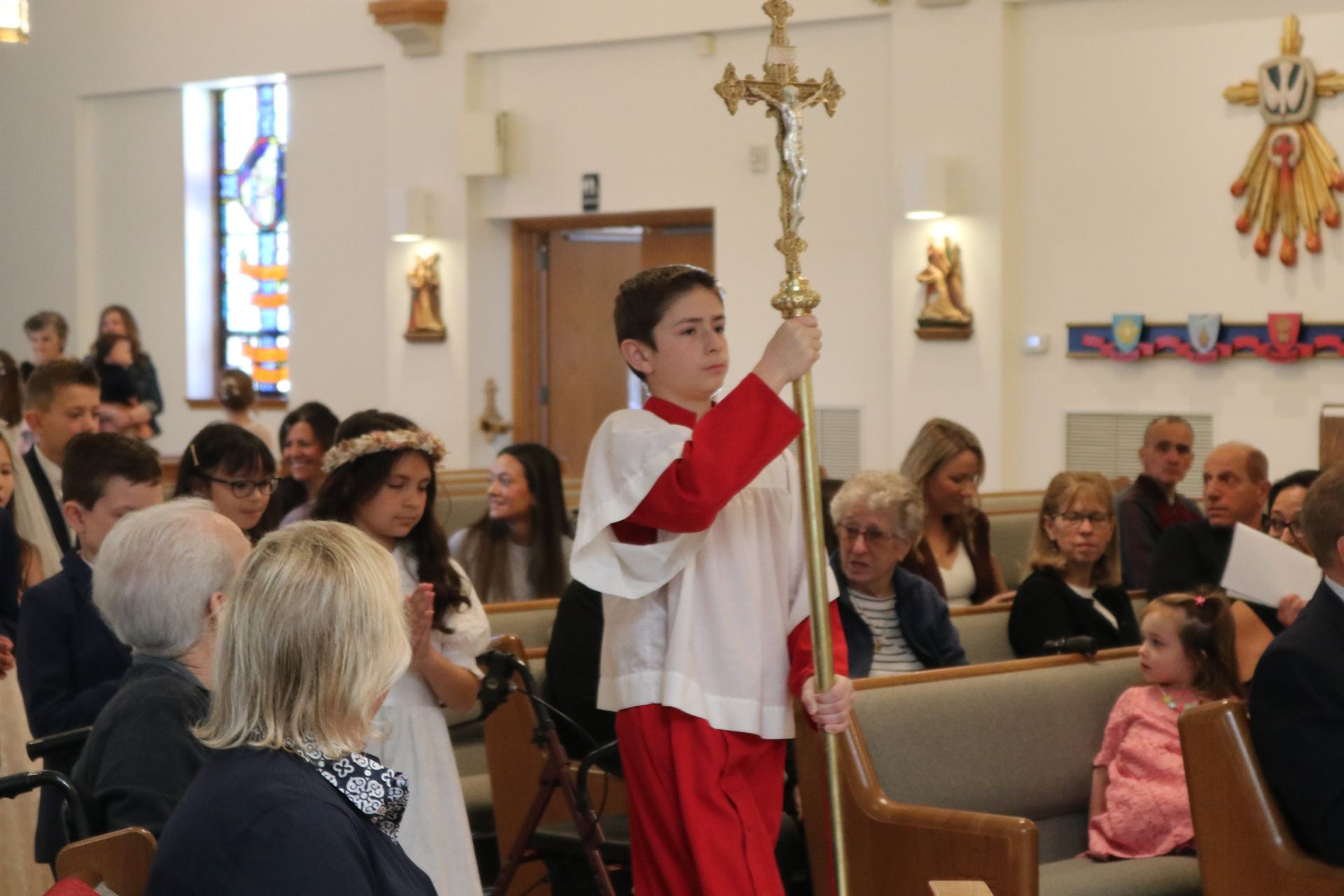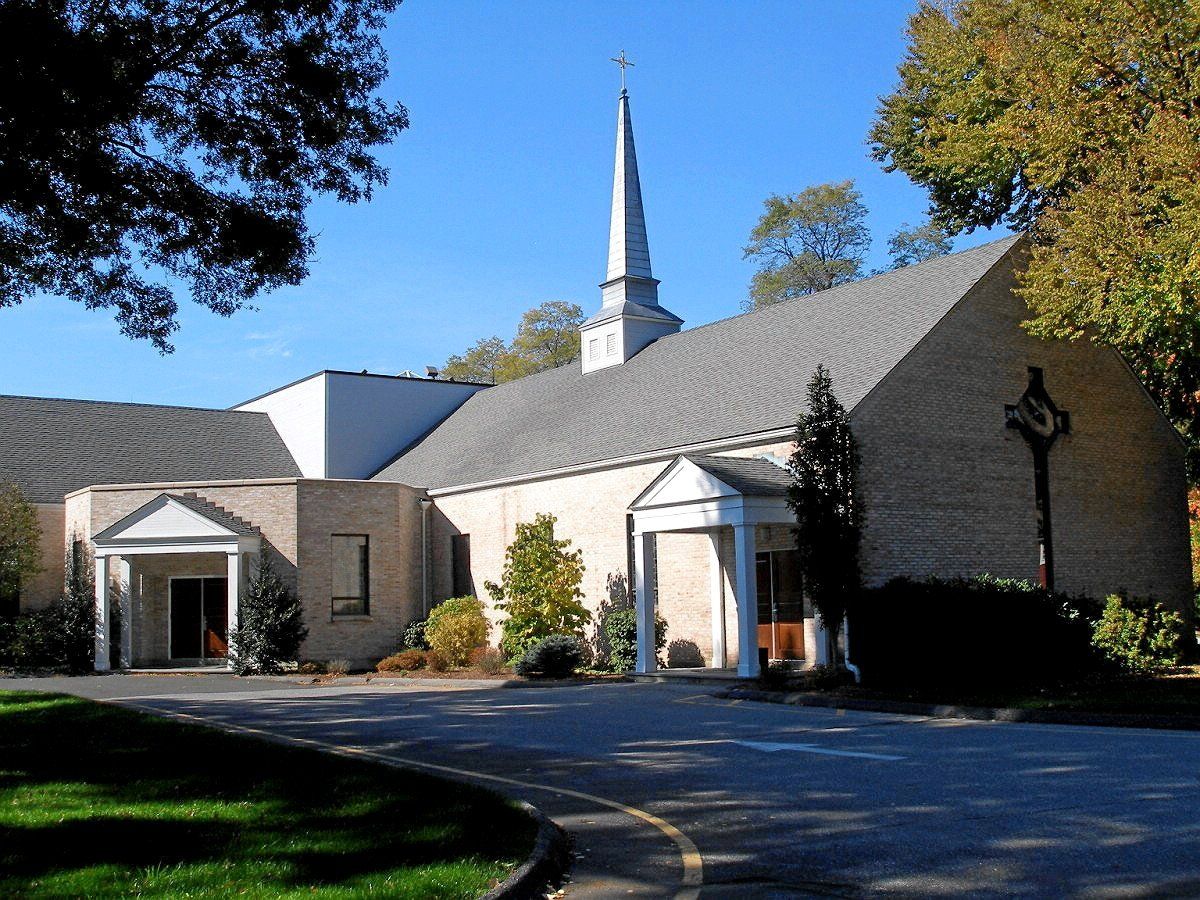The next window is entitled "Our Lady of The Barren Tree" (aka The Madonna of the Dry Wood). It enourages us to ask "What does it mean?" It was inspired by a painting created by Petrus Christus, the 15th century Bruges master painted. Mary stands in the groin of a dead or barren tree, encircled by branches that have somehow sprung forth with new life and join together above her. Fiften golden "A"s are randomly suspended by chains from the spiky branches. Mary is dressed in an ample flowing deep red robe, lined in green placed over a blue gown. She holds the Christ Child who is dressed in swaddling clothes while holding a golden orb, on which a cross is mounted. The trunk of the tree has been cut off, the Mother, the Child and the tree stand out like bright jewels coming forth from a sea of darkness.
The image of the Virgin, standing in a dry or barren tree, is derived from Ezekial 17.24: "And all the trees of the field shall know that I, the Lord, have brought down the high tree, have exalted the low tree, have dried up the green tree, and have made the dry tree to flourish".
The dry (or barren) tree is the Tree of Knowledge which the Lord caused to wither when Adam and Eve ate from its forbidden fruit. Guillaume deDeguilleville was a 14th Century author who inspired Petrus Christus to paint new branches growing out of a dead tree to represent a grafting on from the Tree of Life. There are different levels of meaning here. One speaks of Mary's special birth. She had been conceived by the thought-to-be-barren St. Anne. Thus her birth brings hope and life, where none was considered to be possible.
Another meaning anticipates God's invitation to Mary to become Mother of the Saviou. Thus, by her stance in the tree, she stands in this picture between death and barrenness below and new life and fruitfulness above. Mary's critical YES to God's invitation was her fundamental act of faith that helped reverse the downward spiral of mankind away from God and toward sin and alienation that had begun with the fateful NO of Adam and the first Eve. Symbolically, Mary's affirmation revived the once dead or dry tree, but it was the birth of her Son, the fruit of her faith and womb, that produced the real fruit on the newly green or fertile tree.
In our glass window, Mary holds the Christ Child, who in turn holds a golden orb, or sphere, crowned by the Cross. This symbolizes Christ's sovereignty over the world He holds, and which He will save by the sacrifice of His own life on the Cross. The resemblance to the Crown of Thorns, one of the principal instruments of Christ's Passion, in the circular form of the limbs above and the spiky branches of the tree, reminds us of how great was the love of Christ for us. It produces new life for this symbolic tree, but especially for us, His Church. Thus this Madonna of the Dry Wood signifies both the Fall of Man and his Redemption.
Upon these brances of the new life hang fifteen golden "A"s. They stand for the first letter of the Ave Maria or Hail Mary. The number fifteen reflects the fifteen mysteries of the Rosary. Two things are celebrated here. First, Mary is honored as the new Eve, because Ave was the word spoken to her by the archangel Gabriel, and is the very reverse of Eva, the name of our first mother, whose NO created the need for the Saviour later brought forth by Mary, the new Eve.


